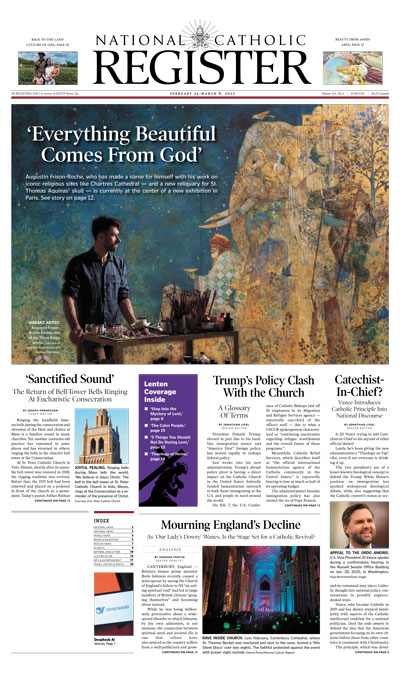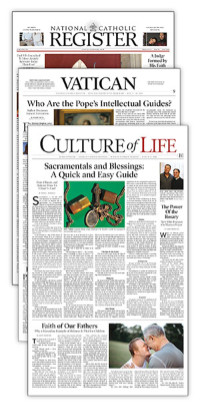How Pope Francis Left His Mark on the Conclave
ANALYSIS: The late Pontiff famously encouraged Catholics to ‘make a mess’ to bring fresh energy and ideas to the Church. The shake-ups that ensued will now influence how his successor is chosen.

Pope Francis was a mold-breaking pope, whose 12-year pontificate was marked by any number of surprises and shake-ups.
But Catholics won’t have to wait long to see how the disruptive approach of the Argentinian Pontiff, who famously urged Catholics to “make a mess,” will impact the Church going forward. Francis’ various reform efforts are set to play an oversized role in the selection of his successor — in more ways than one.
The future of the various processes Francis initiated — from the synodal restructuring of Church governance to exploration of a female diaconate to the Vatican’s accord with the Chinese government — will define cardinal-electors’ decisions at the soon-to-start conclave.
Furthermore, the late Pope made his mark on the College of Cardinals itself, as he expanded the geographic and ministerial diversity of the men who will elect his successor, but also limited cardinal-electors’ opportunities to make connections among themselves.
As a result, and in typical Francis fashion, expect the upcoming conclave to be even “messier” than usual.
A Diverse — and Disconnected — College of Cardinals
From 2013 to 2025, Francis dramatically altered the face of the College of Cardinals, the body from whom the 133 participating papal electors are taken.
At a record high clip of roughly 10 cardinal-electors created per year, the first Pope from the Americas amped up the geographic diversity of the college, shifting red-hat representation away from Old World bastions of Catholicism and toward the Global South. In the process, he created cardinals from Mongolia, South Sudan, and 18 other countries that had never had one before.
As things stand now, 41% of the 133 cardinal-electors are from Europe, down 11% from 2013. The proportion of North American cardinals fell by 2% and currently makes up 10% of conclave participants.
Meanwhile, the proportion of cardinal-electors in Asia went up 8% under Francis to 18%, while Sub-Saharan Africa’s representative share has risen to 13%, a 5% increase. Latin America, the Middle East and Oceania saw more modest upticks, and now claim 17%, 3% and 3% of cardinal-electors, respectively.
Francis didn’t just diversify the geographic profile of the College of Cardinals. He also tended to create cardinals with atypical ministerial track records, showing relative favor to those with limited experience working in the Roman Curia or heading influential archdioceses. Some of the cardinals he elevated from the peripheries remain “unknowns” to the wider Catholic world to this day.
On top of that, Francis swelled the ranks of cardinal-electors, bypassing the 120 upper limit set by St. Paul VI in 1975. The 133 cardinals who will participate in this year’s conclave is 18 more than the previous high of 115 (the number of electors in both the 2013 and 2005 conclaves).
But while Francis made the group of cardinal-electors bigger and broader, he also limited opportunities for its members to get together.
During his reign, Francis held hardly any “extraordinary consistories,” gatherings of the College of Cardinals to discuss and advise the pope on issues related to Church governance and teaching. John Paul II and Benedict XVI both held these kinds of gatherings about once every four years. But after one such gathering of cardinals on the eve of the Synod of the Family in 2014, Francis convened only one other extraordinary consistory during his entire pontificate, in 2022.
As a result, the cardinals who will pick the next pope have had fewer chances to meet with and get to know one another. The general congregations that the College of Cardinals have been holding this past week have certainly provided electors a chance to hear different visions for the Church’s future and to size up potential candidates, but it’s also the case that many of the cardinals are only meeting each other for the first time.
Furthermore, the relative lack of Roman experience among Francis-created cardinals may affect everything from the depth of conversation around intra-curial issues like Vatican finances and diplomacy to participants’ ability to find a common language in which to communicate. Hong Kong’s Cardinal Stephen Chow, for instance, recently joked that he had little chance of becoming the next pope because he doesn’t speak Italian, which is still the lingua franca in cardinalate gatherings.
Cardinal Gerhard Müller, the Vatican’s former doctrine head, said the lack of familiarity among the cardinals is “a big problem” in terms of discerning who to vote for.
“Not just a question of knowing their names but also of knowing their personalities, having spoken with them, exchanged thoughts,” said the German cardinal in a May 1 interview. “To have a sense of: Who is this person who may carry great responsibility as pope?”
The dynamic could make the election even more wide open than normal, as pre-conclave coalitions may have difficulty forming and coalescing around particular contenders. This could lead to a drawn-out affair, making it a very real possibility that this year’s conclave extends well beyond the 2.7 days that papal elections have averaged over the past 60 years.
On the other hand, the combination of diversity and unfamiliarity could affect things in the opposite direction, increasing reliance on figures who have already established significant profiles. At this juncture, it’s impossible to know — though perhaps it’s telling that the figure widely thought to be the pre-conclave “front-runner,” Cardinal Pietro Parolin — Vatican secretary of state during the papacy of Pope Francis — has been criticized in the media this past week from multiple sides.
Other reforms of the conclave process that had reportedly been considered by Francis, including barring cardinals over 80 years old from preparatory meetings and limiting the number of individual speeches before the whole body of electors, were never finalized during his lifetime.
Nonetheless, the late Pope left his mark on the College of Cardinals, which will now elect his successor in a conclave that is expected to be more unpredictable than normal.
A Referendum of Francis’ Reforms
But the conclave won’t just reflect Francis’ personnel choices — it will also grapple with the pastoral and doctrinal path he began to chart for the Church.
Given all the processes started by Pope Francis, conclave voters will have to filter their pick for pope largely through the lens of how — or whether — they want these initiatives to continue.
Fault lines along this framing have already emerged, with some cardinal-electors calling for “unity” and “clarity,” with others advocating for a pope who take things further down the path of change that Pope Francis initiated.
Front and center in these discussions and in most cardinals’ conclave calculus will be the future of the Synod on Synodality, an ambitious and controversial reform effort that Pope Francis launched in 2021 to make the Church more inclusive and participatory. The late Pope ensured that the synod would have life beyond his pontificate when he approved on March 15 — while still in the hospital with double pneumonia— an “ecclesial assembly” in 2028 to evaluate the worldwide implementation of recommendations established at the 2024 synod.
Given that this future synod-related assembly has already been announced, it seems unlikely that it doesn’t take place at all, as it is generally important to Church leaders to maintain at least the appearance of continuity from one pope to the next. However, what version of “synodality” is put forward, and how much weight it will carry, are criteria cardinal-electors will consider as they evaluate candidates.
Another major issue is the Church’s pastoral outreach to persons with same-sex attraction. Pope Francis set off a firestorm — and raised concerns about schism — in December 2023 when he approved of Fiducia Supplicans, which allowed priests to give non-liturgical blessings to same-sex couples. The development generated enormous pushback, particularly from Africa, which resulted in the Vatican essentially downplaying the document’s significance. Papal contenders will likely be expected by cardinal-electors to give an idea of how they think the Church should move forward on the issue.
The same can be said for conversations related to a non-ordained female diaconate, which Pope Francis initiated during his pontificate without ever making a decisive conclusion. Similarly, pushes for decentralization of doctrinal authority and a deemphasis on moral absolutes in Church-sanctioned theology resurrected during Francis’ pontificate will also factor into cardinals’ considerations.
On the topic of Vatican relations, the cardinals will also have to evaluate the way forward in light of the status quo Francis has left behind. Should the Vatican’s agreement with China, first signed in 2018, be the way forward, even though the Chinese government has continued to install bishops unapproved by the Holy See? Regarding the Catholic Church in Germany, is a more aggressive stance needed, given that Francis’ approach did little to deter the Synodal Way from moving forward with heterodoxical proposals?
Finally, papal candidates will likely have to frame their visions for Vatican governance in the context of Francis’ tenure, which was marked both by pushes for financial reform and transparency but also by an unpredictable and persona-driven style of governance that broke norms and institutional checks.
In short, the next conclave will not just be about choosing a new pope — it will be about choosing what to preserve, what to revise, and what to leave behind from the Francis era. The 133 cardinals who gather in the Sistine Chapel will carry with them not only the legacy of the man who appointed most of them, but also the unresolved questions he leaves in his wake. Even in death, Francis is set to shape the future of the Church — one cardinal’s vote at a time.
- Keywords:
- 'pope francis
- conclave

















